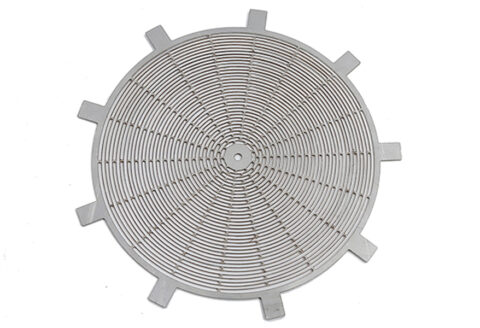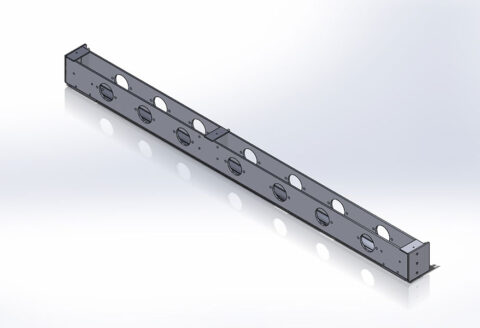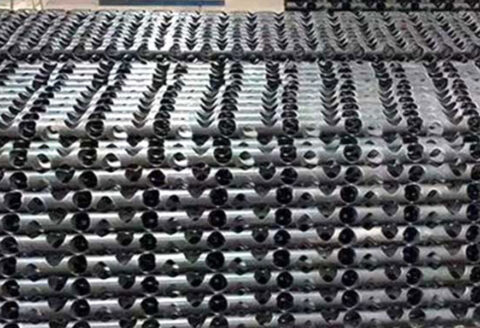Dissimilar metals refer to metals containing different elements (such as aluminum, copper, etc.) or certain alloys formed from the same basic metal (such as carbon steel, stainless steel, etc.), and their metallurgical properties such as physical and chemical properties are significantly different. They can be used as base materials, filler metals or welding metals.
Dissimilar material welding refers to the process of welding two or more different materials (different chemical composition, metallographic structure and performance) under certain technological conditions. In the welding of dissimilar metals, the welding of dissimilar steels is common, followed by the welding of dissimilar non-ferrous metals and the welding of steel and non-ferrous metals.
There are three basic situations for the joint form, namely, the joint of two different base metals, the joint of the same base metal, but different filler metals (such as joints and austenitic medium-carbon quenched and tempered steel welding materials), and composite Joint of metal plates.
The welding of different materials is to weld two different metals together to produce a transition layer with different properties and structure from the base material. Because different metals have significant differences in element properties, physical properties and chemical properties, the laser cutting china mechanism and operation process of different metals are much more complicated than the same material.
The main problems in welding of dissimilar materials are as follows
1. The greater the difference in melting point between different materials, the more difficult it is to solder.
This is because when the low melting point material reaches a molten state, the high melting point material is still in a solid state. At this time, the molten material easily penetrates into the grain boundaries of the superheated zone, causing loss of low melting point materials, burning or evaporation of alloying elements, making it difficult to weld the welded joint. For example, when soldering iron and lead (the melting point is very different), the two materials can neither dissolve in each other in the solid state, nor in the liquid state. The liquid metal is distributed in layers and crystallizes separately after cooling.
2. The greater the difference in coefficient of linear expansion between different materials, the more difficult it is to weld.
The greater the linear expansion coefficient, the greater the thermal expansion rate, the greater the shrinkage during cooling, and the greater the welding stress when the molten pool crystallizes. This kind of welding stress is not easy to eliminate, resulting in larger welding distortion. Due to the different stress states of the materials on both sides of the weld, it is easy to produce cracks in the weld and heat-affected zone, and even cause the weld metal and base metal to peel off.
3. The greater the thermal conductivity and specific heat tolerance of different materials, the greater the difficulty of welding.
The thermal conductivity and specific heat capacity of the material will deteriorate the crystallization conditions of the weld metal, severely thicken the crystal grains, and affect the wettability of the refractory metal. Therefore, a strong heat source should be selected when welding, and the position of the heat source should be inclined to the side of the base material with good heat conductivity.
4. The greater the difference in electromagnetic properties between different materials, the more difficult it is to weld.
Because the greater the electromagnetic difference of the material, the more unstable the welding arc and the worse the weld.
5. The more intermetallic compounds formed between different materials, the more difficult it is to weld.
Due to the brittleness of intermetallic compounds, it is easy to produce cracks or even breaks in the weld.
6. In the process of welding dissimilar materials, due to the change of the metallographic structure of the welding zone or the newly formed structure, the performance of the welded joint is deteriorated, which brings great difficulties to the welding.
The mechanical properties of the fusion zone and heat-affected zone of the joint are poor, especially the plastic toughness is significantly reduced. Due to the reduction of joint toughness and the existence of welding stress, welded joints of dissimilar materials are prone to cracks, especially in the heat-affected zone of welding.
7. The stronger the oxidation of different materials, the more difficult it is to weld.
If copper and aluminum are welded by fusion welding, it is easy to form copper and aluminum oxides in the molten pool. During the cooling crystallization process, the presence of oxides in the grain boundaries reduces the intergranular bonding force.
8. When welding different materials, it is difficult for the weld and the two base materials to meet the requirements of equal strength.
This is because metal elements with low melting points are easy to burn and evaporate during welding, thereby changing the chemical composition of the weld and reducing the mechanical properties, especially when welding different non-ferrous metals.


